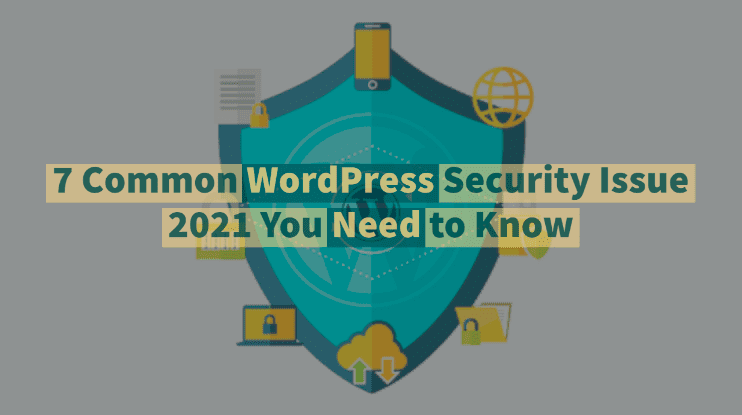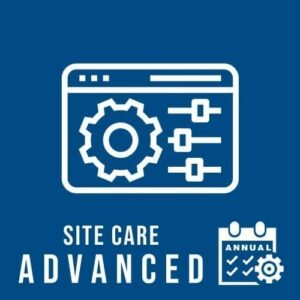
WordPress is one of the most commonly used CMS (Content Management System) on the internet. With its gain in popularity, it is also the most current CMS to get hacked. Due to a sudden shift of all e-commerce businesses in WordPress, a large amount of user and company data is under threat.
Now this will make you consider shifting to any other WordPress alternative, but you can instead identify these issues and be prepared for any security attacks. Being under any security attack can widely affect your reputation, especially if your site visitors are affected by the attacks. Therefore, it is important to identify these threats and be prepared to avoid or resolve these security issues.
In this article, we’ll go through the 7 most common WordPress security issue, their causes, and ways you could avoid them.
What is the most common WordPress security issue?
It is impossible to predict what and how many WordPress security issue threats your website might undergo. However, you can still create an understanding of these common security threats so you don’t fall a victim to one of them. Most of these threats are linked together, therefore being prepared for one issue can prepare and protect you from another. These are the most common WordPress security issue that we will be discussing further.
- Unauthorized Logins
- Undefined User Roles
- Search Engine Optimization (SEO) Spam
- Outdated Themes and Plugins
- Unchanged URLs and File Names
- A Lack of Data Transmission Encryption
- SQL Injection
Reasons behind these WordPress security issue:
- Unauthorized Logins:
It is mostly a case of brute force login, in a brute-force attack the hacker uses a bot suggesting any potential combination of username-password. The actual reason behind the unauthorized logins is a default back-end login page of WordPress sites which is relatively easy to find. Anyone can simply take the site’s main URL, and they’ll gain access to the login page. This is the highest, most risked security threat in WordPress if not resolved in time.
- Undefined User Roles
There are six different user roles you can choose from when creating a WordPress website, like subscriber or administrator. The default role given is mostly the administration, which has the most control over any given WordPress site. If these roles are assigned accordingly, they permit access which restricts a user from taking particular actions on your site. If these user roles are not assigned and everyone with access has admin roles it can make your WordPress site more vulnerable to brute force attacks. The hacker will then make administrative changes to your website to obtain additional information from your site visitors.
- Outdated Themes and Plugins:
The most common reason WordPress appeals to new users is its customizability. WordPress owns can easily customize their site and update them accordingly. The developers release new updates constantly to increase the efficiency and security of your WordPress website. If the owner doesn’t update its website theme and plugins, its WordPress Security Issue website can be exposed to high-security risks. The hacker can use these outdated themes and plugins as entry points since they are no more compatible with new requirements.
- Malware
Malware is short for malicious software, hackers use these software to implant a code into your existing files causing general havoc by unauthorized login stealing a website and its visitor’s data. The reason WordPress websites are vulnerable to malware is due to previously defined issues. Like unauthorized login, undefined user roles, and outdated themes and plugins. If under attack there are few steps you can take to remove malware from your WordPress website. In this, the hacker takes advantage of weak security systems and places harmful code on your WordPress site.
- Unchanged URLs and File Names
It is one of the most overlooked security threats, if not handled timely. Using the default structure of URLs, file names, and storage locations makes it easier for a hacker to attack them.
- A Lack of Data Transmission Encryption
There is multiple forms option on a WordPress site that users use to fill in their information. This information is stored in text fields which makes WordPress site vulnerable to the man-in-the-middle attack. It is important to encrypt the data communication threats else is under attack, the hacker can use this data to carry out ransomware attacks, financial fraud, or identity theft.
- SQL Injection
SQL is a programming language that is most compatible with WordPress to quickly access stored data. It is also one of the means hackers can use to gain access to the WordPress database and perform modifications. In SQL injection hackers use forms available on WordPress websites like the contact us ones. The hacker uses these fields to submit code that they then run to make changes within. Attackers can use SQL to make new accounts on your site, add unauthorized links and content, and leak, edit, and delete data.
How to avoid these WordPress security issue:
Now let us walk through few ways where you can avoid these security issues. Here’s a list of precautions you can take to keep yourself prepared for these WordPress security issues. Most of these issues are interlinked and are due to a lack of knowledge and usage of default outdated WordPress functionalities.
- Apply plugins like Limit Login Attempts, Loginizer, and WPS Limit Login to limit login attempts which can work best again brute force attacks.
- Use unique id combinations and strong passwords to avoid any easy guesses
- Use unique URLs as default URLs provide easy access to admin login.
- Change default database table names, as WordPress data table names come with a default WP prefix making them easier to attack.
- Enable data encryption between users by installing an SSL/TLS certificate on your website.
- Install trusted security firewalls and malware, vulnerability scanners as they monitor your website 24/7 from any malware attack or suspicious activity.
- Update plugins and themes regularly
- If you have roles assigned to different people make sure you define their user roles to limit their access to the website.
- If you’re an owner of a small business look for different cybersecurity plans for your small business.
By following the above-mentioned tips you can at least fix the well-known WordPress security vulnerabilities.
CONCLUSION:
With the help of proper understanding about these WordPress Security issues. WordPress, despite being vulnerable to most of the cyber attacks is still a secure platform if WordPress security best practices are followed. Being an owner or a developer if all the basic precautions are fulfilled your website will be able to flex a robust security posture.



